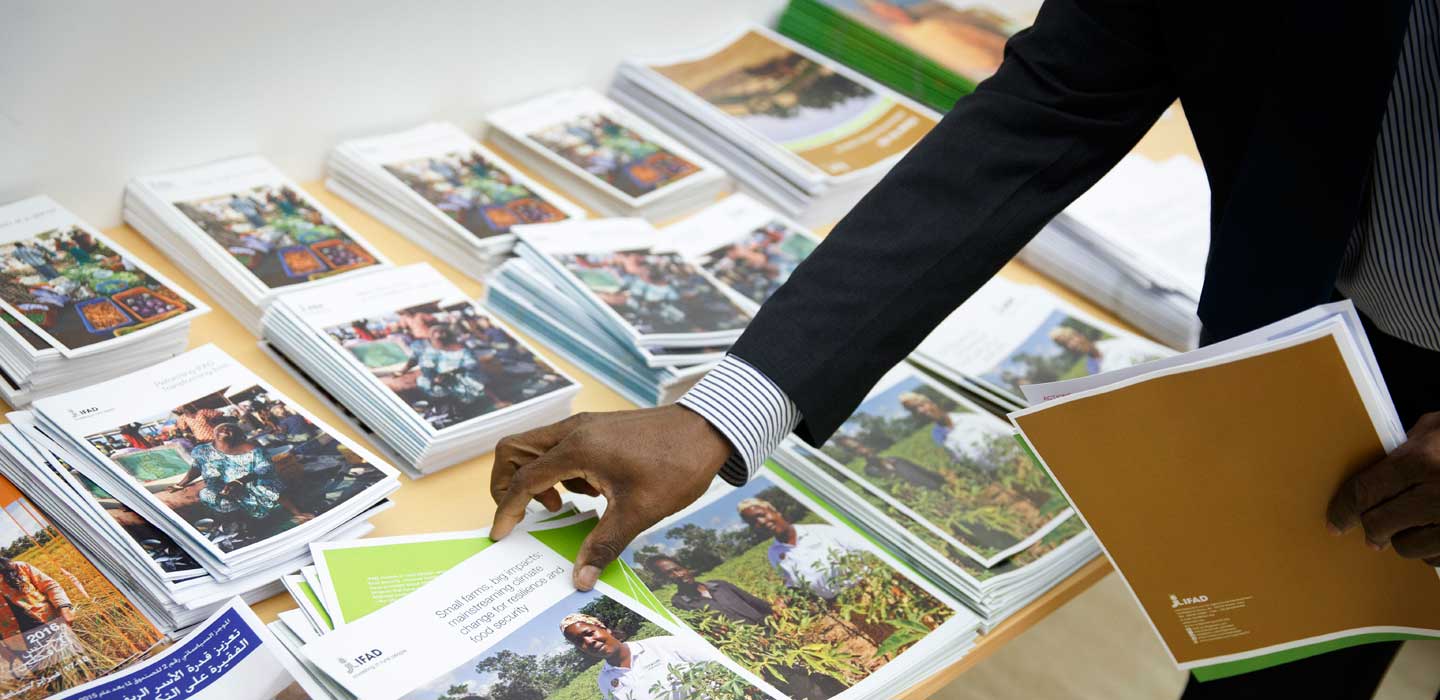Factsheets

صحف الحقائق
عرض القائمة
Search Results Filters
نتائج البحث
GEF Swaziland factsheet
FAO's and IFAD's Engagement in Pastoral Development
GEF Sao Tome & Principe facsheet
GEF Ghana facsheet
because of the difficult access to markets.
Investing in rural people in El Salvador
IFAD has acquired considerable experience during its three decades of partnership with the country. It has contributed directly and indirectly to the mobilization of resources aimed at removing structural obstacles to the development of rural poor people. This has been achieved through the active involvement of, and coordination with, family farmers, indigenous peoples, rural youth organizations, government, international cooperation agencies, civil society and, more recently, the private sector.
IFAD-funded projects mainly support family farmers and entrepreneurs in municipalities in which poverty is prevalent. Activities have also helped to address needs arising after the end of the 12-year internal armed conflict and the 2001 post-earthquake reconstruction process.
Jordan - Irrigation Technology Pilot Project to Face Climate Change
ASAP Sudan factsheet
Ecuador - Sustainable Management of Biodiversity and Water Resources in the Ibarra-San Lorenzo Corridor
GEF Senegal factsheet
main components: i) capacity building, awareness raising and knowledge
management at the national level, ii) water harvesting and watershed
management, and iii) water conservation and efficient irrigation.
Climate Change Adaptation Project in the Areas of Watershed Management and Water Retention
main components: i) capacity building, awareness raising and knowledge
management at the national level, ii) water harvesting and watershed
management, and iii) water conservation and efficient irrigation.
ASAP Burundi factsheet
ASAP Uganda factsheet
PRELNOR will enable smallholder farmers to improve their productivity to a level where there is enough surplus production that the farmer can sell at market.
GEF Mexico factsheet
project area and develop local capabilities, leading to the reduction of carbon
emissions from deforestation and the increase of carbon sequestration
through the financing of initiatives for the most vulnerable. Project operations
are focused in 25 municipalities, in which 83 per cent of the population are
indigenous peoples.
Investing in rural people in Colombia
Addressing climate change in Latin America and the Caribbean
Addressing climate change in Near East, North Africa and Europe
World Water Week 2015 - Water for Agricultural Development
Water lies at the heart of sustainable development and is essential for economic growth, poverty reduction and environmental sustainability. It is the basis of human and environmental health, energy security, sustainable urbanization and the ability of rural women and men in developing countries to pursue productive activities.
But one billion people still lack access to safe water and even more lack access to basic sanitation. Around three quarters of the world’s poorest and hungriest people live in rural areas, often forgotten and bypassed by economic growth and development programmes. The majority of rural people depend on agriculture for their livelihoods, but face numerous barriers in accessing services and securing vital resources, including water.
ASAP Egypt factsheet
The community development activities will focus on the ''new lands'' that have been settled by smallholder farmers. Community development associations will be strengthened so that they can allow for the inclusion of women and youth. The project will also provide buildings and financing for schools, health clinics, community centres and clean water infrastructure.
ASAP Kenya factsheet
ASAP Niger factsheet
ASAP Morocco factsheet
Project to Support Food Security in the Region of Maradi (PASADEM)
around 5 centers of economic development (Tessaoua, Tchadoua, Sabon Machi,
Guidan Roumdji and Djirataoua) in 18 communes in the Maradi region.
GEF Niger factsheet
Participatory Coastal Zone Restoration and Sustainable Management in the Eastern Province of Post-Tsunami Sri Lanka
Enhancing Resilience of Agriculture Sector in Georgia (ERASIG)
PARM Result Factsheet May 2015
ASAP Chad factsheet
ASAP Lesotho factsheet
Only high quality wool and mohair can be exported, and this is dependent on the quality and health of the livestock. The main factor in raising high quality livestock is maintaining healthy rangelands.
Investing in rural people in Cuba
Given the challenges the agricultural sector faces, IFAD is in a position to serve as one of the country’s strategic partners, contributing to the ongoing modernization process.
Cooperatives in Cuba are key actors in ensuring food security, as they represent 80 per cent of the country’s agricultural production. The Government of Cuba has expressed interest in re-establishing the partnership with IFAD with a view to modernizing agriculture.
This will be achieved mainly through developing non-state smallholder farmer business cooperatives. In this respect, IFAD is well placed to provide technical assistance through its projects to increase the physical, human, social and environmental assets of cooperatives.